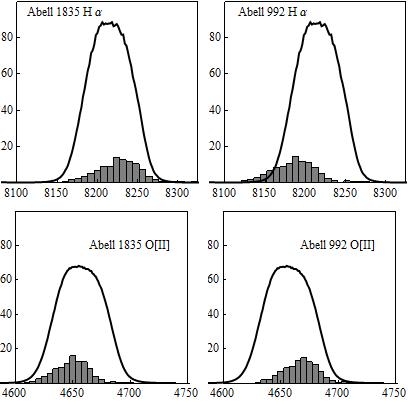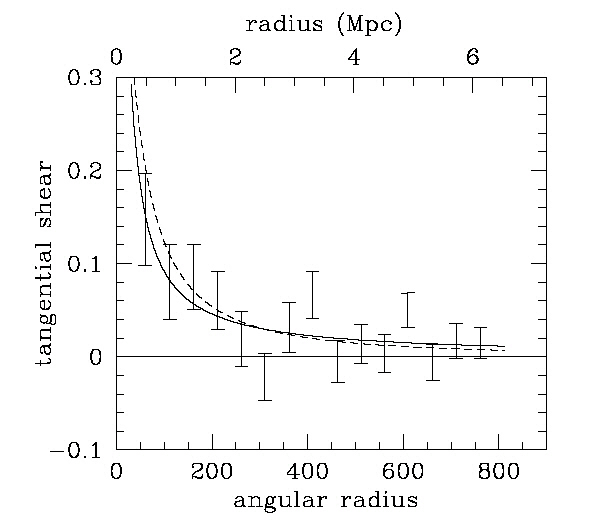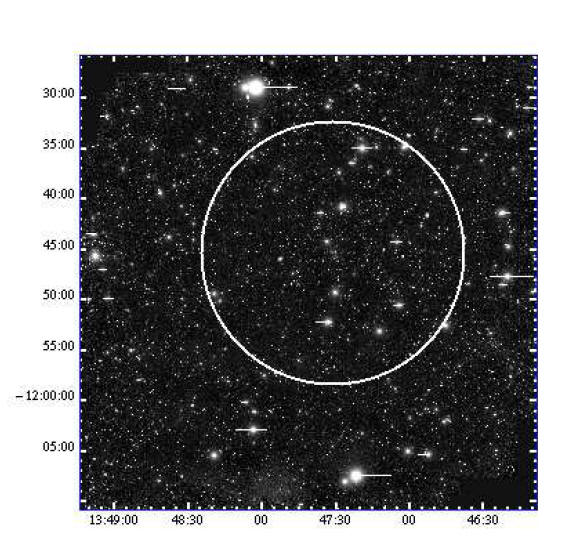I have been granted 3.5 nights of telescope time at the 4-m Mayall telescope at the Kitt Peak National Observatory in March 2013. My collaborators at Brown University and I will use this time to take deep images of two clusters at redshift of 0.25. We will be using two narrow band filters that will capture emission from the clusters of light generated by star formation - one filter measures the H-alpha emisision line, and the other filter measures the O[II] emission line. From flux density in these two lines, we can determine how many stars are being formed in the galaxies, down to about 0.5 solar masses of stars created per year. The accepted telescope proposal is “Uncovering the distribution of star formation in z=0.25 galaxies.”
Because the individual galaxies are moving towards and away from us, the precise location of the center of the emission line is unknown (due to the local redshift). In the figure to the right, we show the narrow band transmission curve along with an estimate of the number of galaxies with the central wavelength given on the horizontal axis. These estimates are based on the measured velocity dispersion of galaxies in the Coma cluster.

| In
“Wide-field weak lensing
by RXJ1347-1145”, I analyzed the cluster RXJ1347-1145 for weak lensing
shear.
We found that the tangential shear fits both a SIS (solid) and NFW (dashed) profile. The best fit parameters indicated a cluster mass on the order of 1.5 x 1015 solar masses. The image was taken in Chile at CTIO using the Blanco 4-m telescope. The bottom right panel shows a high mass density (color contrast) at the location of the cluster. The two circles indicate the region where weak lensing signals were examined. |
 |
 |
 |